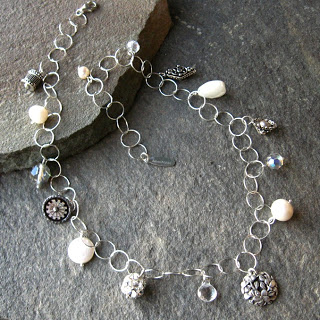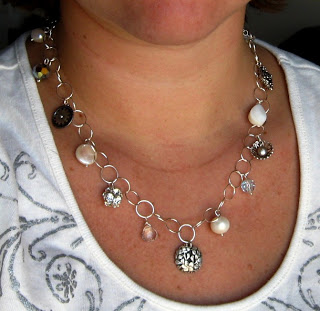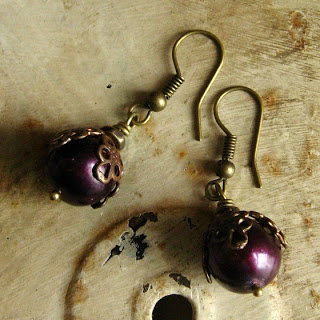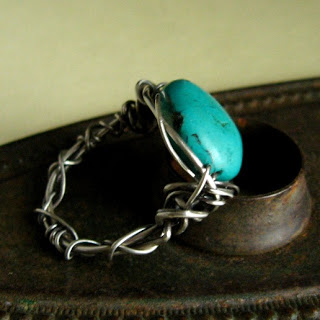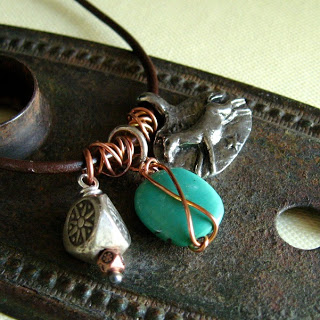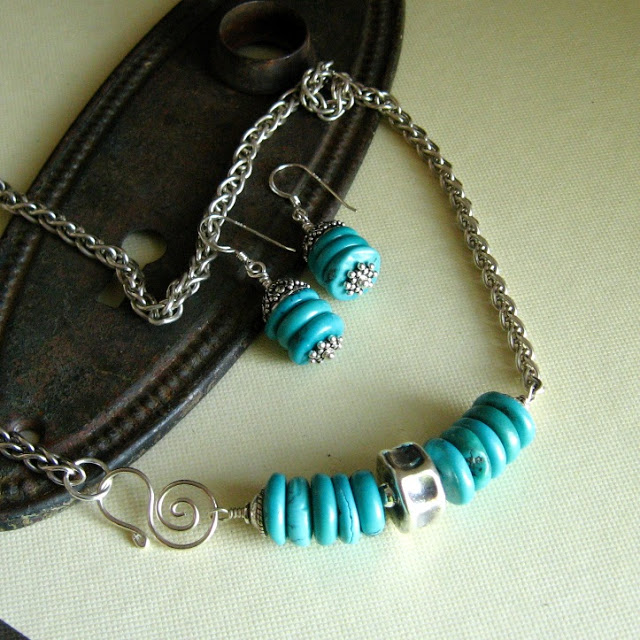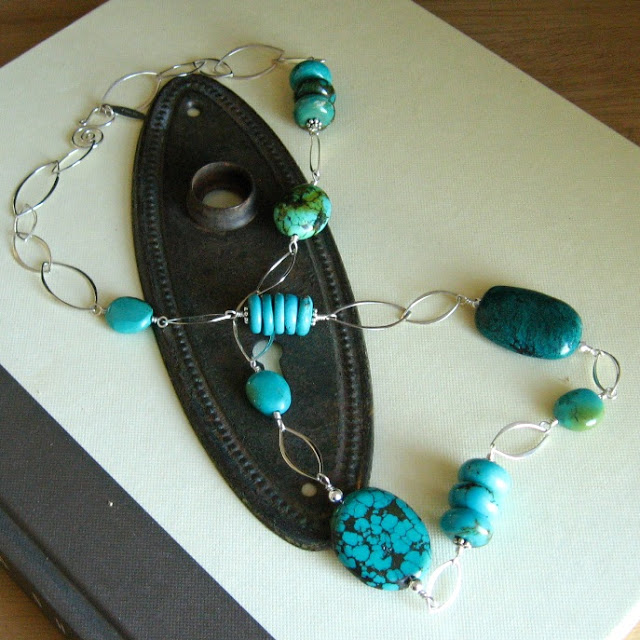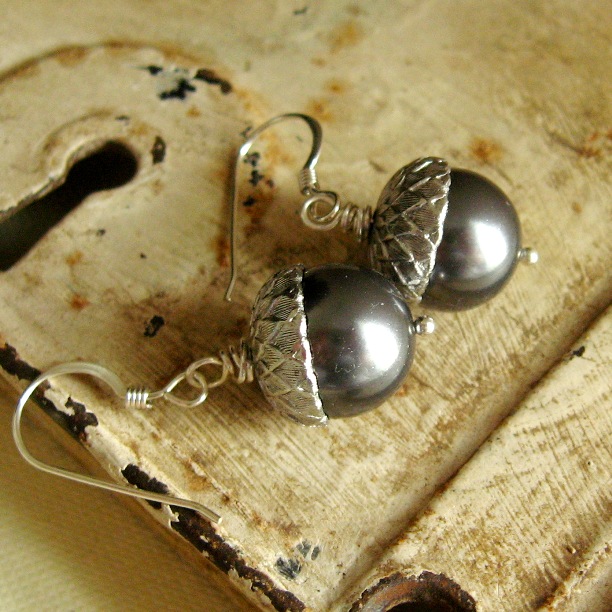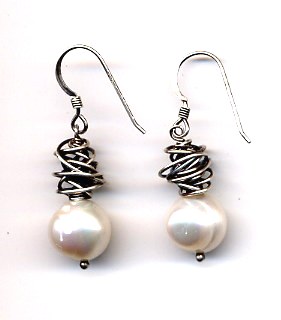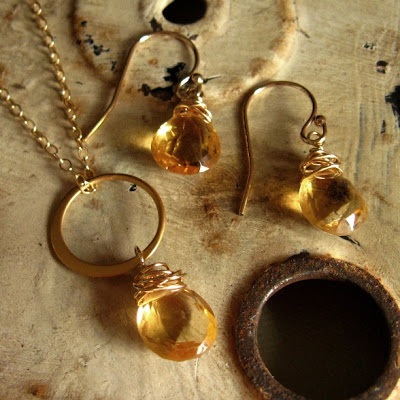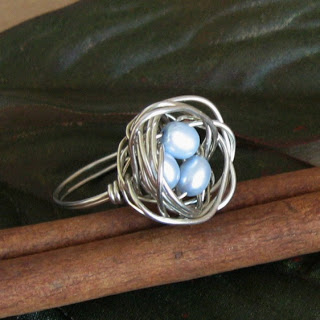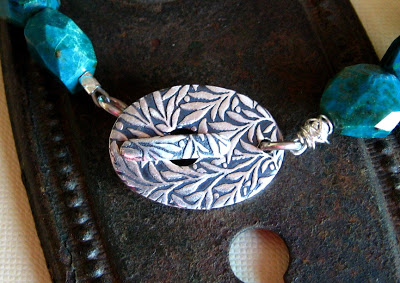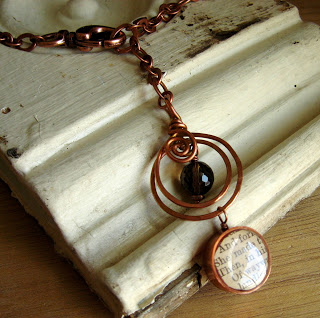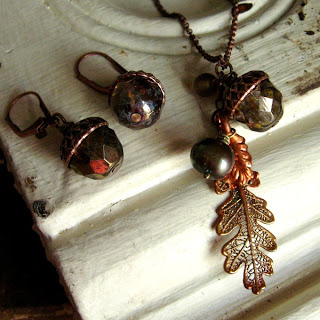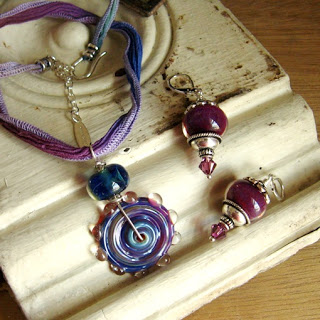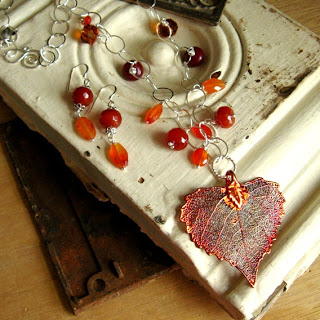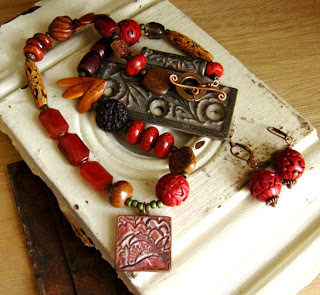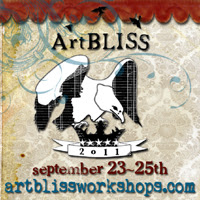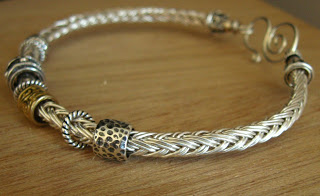Hi, gang. I have been sqeezing in studio time here and there, working on a grouping for the shop downtown. When my son was born in October he slept all the time, so I was able to keep making jewelry for the Christmas season.
 |
| My newest studio helper |
But as Bowen has gotten older his naps don’t usually coincide with Olivia’s naps, so now my bench time is that much more precious. I apologize if I don’t update my blog a whole lot; it’s just something I’ve had to cut out along with listing jewelry for sale online.
A while ago I found some old steel cut buttons in an antique store. They were from the estate of a button collector, lovingly arranged on a card. I took one off to give to a friend who loves romantic-vintage stuff like that. The second one came off the card today when I was creating this sampler necklace inspired by another that sold right after I made it.
The floral centerpiece is a PMC piece I made, and the dangles include freshwater pearls, vintage crystals, sterling silver beads, quartz, and an antique button from my precious stash. If you’ve ever tried to dangle a shank button without having it tip forward or altering the shank, you know my challenge for today’s studio time. Now I’m sharing my tricks with you. Here is the bail I created as a solution.
 |
| Reverse side |
![]()

